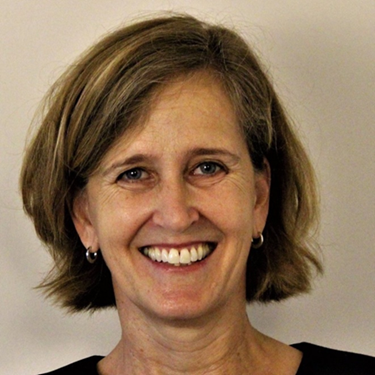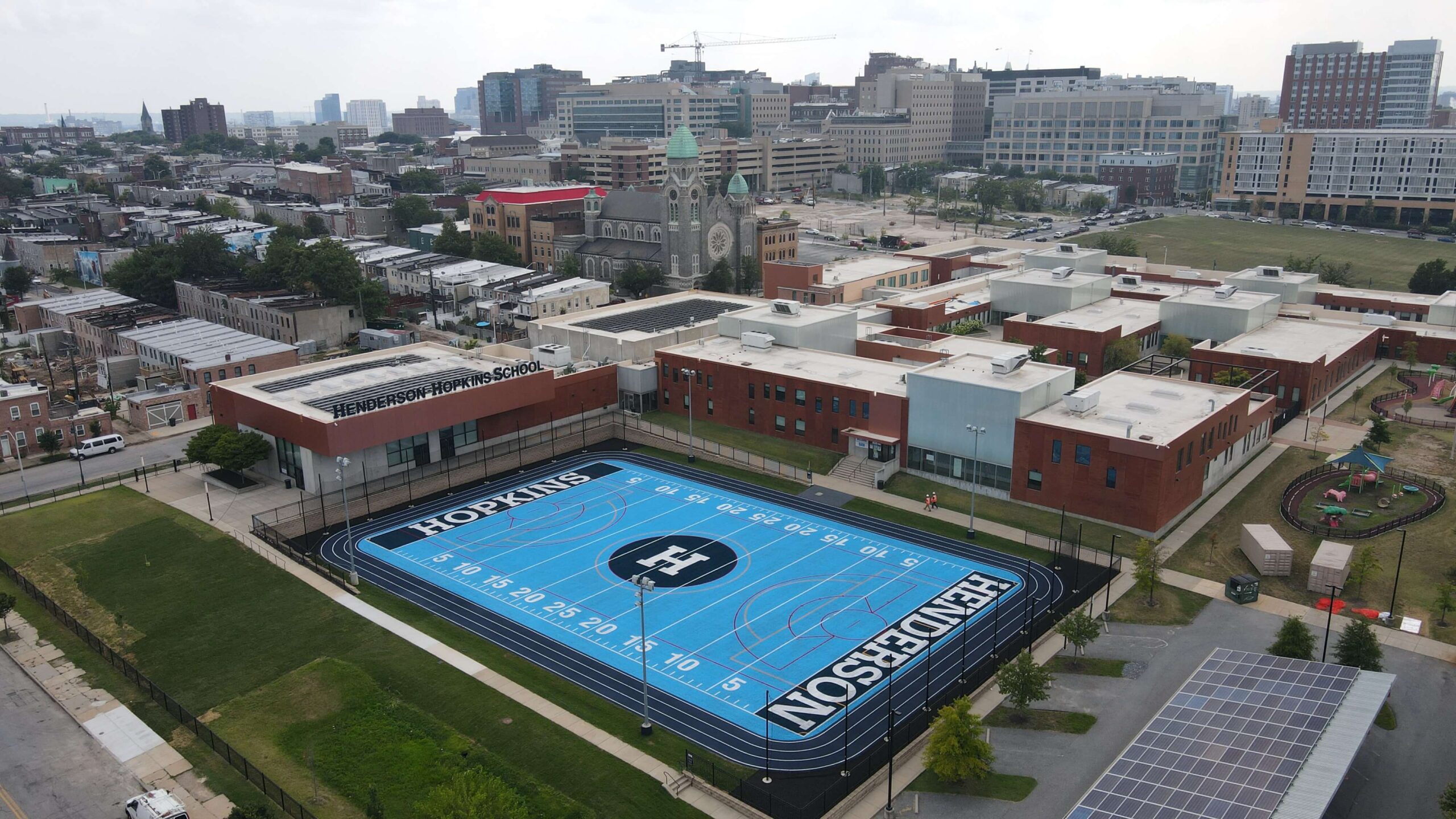Lynn Heller is a social entrepreneur with extensive experience in the nonprofit sector. Prior to launching the Climate Access Fund, Lynn served as Vice President of the Abell Foundation, where she oversaw the foundation’s operations and managed the Foundation’s environmental grants portfolio. Lynn has worked as a nonprofit strategic planning and management consultant and has launched political and economic development programs in Baltimore, California, and Indonesia. Lynn is Board Chair of the Maryland League of Conservation Voters, a past member of the Maryland Climate Change Commission, and a founding member of the Baltimore Sustainability Commission.
I hope you enjoy learning more about expanding low-income community solar through partnerships, innovative financing, and advocacy in the summary of our conversation below.
-Adaora Ifebigh

Lynn Heller - Credit: Climate Access Fund
For those who might not know, what is the Climate Access Fund?
The Climate Access Fund (CAF) is a nonprofit green bank that uses flexible capital to increase community solar development in and for historically disinvested communities in Maryland. As we know, environmental harms and the impact of climate change disproportionately affect historically disinvested communities as well as neighborhoods with greater percentages of low-income people of color. In Maryland alone, there are 400,000+ low-income households, yet only a fraction have participated in Maryland’s Community Solar Pilot Program since the program’s inception six years ago.
Most community solar projects are located on large tracts of land and serve higher income families because these are the projects that tend to provide the most attractive financial returns for investors. Yet smaller (<1 MW) projects located on commercial rooftops and parking lots in underserved communities have the potential to offer a range of community benefits in addition to electricity bill savings. These “co-benefits'' can include, but are not limited to, job training, employment and educational opportunities, and wealth creation through shared ownership of the solar asset itself. CAF’s low-cost financing – raised from a combination of public, private, and corporate sources – makes these projects viable.
What inspired you to start the Climate Access Fund?
I was working at a private foundation that had a history of supporting efforts to tackle and alleviate poverty. The foundation had a focus on Baltimore City and a history of social impact investing. I had long been passionate about environmental sustainability, reducing the impact of climate change, and advancing social justice efforts, and while at the foundation, I was focused on making sure that low-income households would not be left out of the clean energy transition.
After the 2016 election, I felt moved to do more on this issue because I sensed there would be less motivation at the federal level in the coming years. The more I learned about low-income household access to solar, the more I discovered: (a) the real potential of community solar to reach low-income households at scale; and (b) a clear financing gap was preventing private solar development from benefitting low-income households. CAF was launched to plug that financing gap using social impact capital.
Through a community impact partnership with Sol Systems and Microsoft, Climate Access Fund is implementing a community solar project “Solar4Us @ Henderson-Hopkins” in Baltimore, MD. Can you share the history and details of this project?
Elmer A. Henderson: A Johns Hopkins Partnership School (or as most people refer to it, Henderson-Hopkins) is a Title I, K-8 school in the heart of East Baltimore. It is a few blocks away from Johns Hopkins Facilities – the hospital, the Bloomberg School of Public Health, and the School of Medicine. Henderson-Hopkins is a contract school (like a charter school) that serves a school community that is over 95% Black/African American, with 100% of its students eligible for free and reduced lunch. The K-8 school is part of a state-of-the-art school campus that also includes the Harry and Jeanette Weinberg Early Childhood Center, a local pioneer serving families eligible for Head Start alongside families paying market rate.
Henderson-Hopkins operates as a community school, which is a school that places focus on supporting and building partnerships with residents in addition to academics and student outcomes. During the height of the pandemic, I went to Henderson-Hopkins as a volunteer, and I delivered food to residents who were lining up in their cars. Impressed by the ethos of the school and their community school approach, I reached out to school leadership to introduce the concept of a rooftop solar array that would benefit the families in their school community as well as other neighborhood residents. Henderson-Hopkins was enthusiastic about this idea and agreed to be our demonstration site, and Solar4Us @ Henderson-Hopkins was born. Henderson-Hopkins agreed to use 100% of all power generated for the benefit of the school community as opposed to drawing energy for the benefit of the school campus. The project anticipates serving ~150 - 175 low-income households. Each household that enrolls will experience a 25% savings on their electricity bills.
Our approach also emphasizes the necessity of other co-benefits, such as workforce and education-related opportunities. The construction of the system will create solar-related jobs in the neighborhood, and we prioritize local hiring. We are also working with a local nonprofit, CivicWorks, to offer paid apprenticeships to graduates of their solar installation job training program. Furthermore, we are sponsoring an after-school club for Henderson-Hopkins middle school students that focuses on environmental sustainability and clean energy, and with the solar panels being an on-site, provide an experiential learning tool. Ultimately, our target is to offset 27,000 metric tons of C02, the equivalent of ~3.04 M gallons of gas consumed and generate $1.1 M in household savings over the projected 35-year lifespan of the solar panels.
Why is this project important for the area where it is located?
The opening of the Henderson-Hopkins campus in 2014 represented progress toward the fulfillment of a commitment made by Johns Hopkins University to families in the Old Town/Middle East neighborhoods of East Baltimore. In these neighborhoods, the median income is less than $25,000, and over 50% of children live below the poverty line. It is a predominantly Black neighborhood, and 90.8% of residents identify as Black, Indigenous, People of Color (BIPOC). Over 50% of the adult population is unemployed. For participating families, the 25% discount on monthly electricity bills could very well be the difference between a paid bill and cut off electricity, which negatively impacts children and families from financial, health, and well-being standpoints.
What would you say are the benefits of partnerships when trying to address challenges facing our communities today?
At the fundamental level the only reason CAF is doing this is because of our partnership with the school. We are so fortunate to have such an enthusiastic and values-aligned partner like Henderson-Hopkins for our first demonstration of this community solar approach. We recently filled our last fundraising gap through a crowdfunding effort and should begin construction in Fall 2023.
Funding from Sol Systems has been critically important in the financing of this project because it has allowed us to do things like create a working capital fund, which every solar project needs. It also allowed us to establish necessary reserves, which we wouldn’t otherwise have. We also appreciate Sol Systems sharing their significant expertise with CAF, as well as sending us relevant funding opportunities as they learn of them to help us leverage additional funding.
We are intentional about cultivating mutually beneficial partnerships at every level. This includes large national coalitions, peers in the green banking and solar development fields, elected officials, and quasi-public agencies at all levels of government; community-based organizations and resident leaders, renewable energy and environmental justice advocates, and other mission-aligned organizations. Partnership development is an area of work for which we care deeply about, and as we grow, we look forward to having more internal capacity to expand our reach.
In short, our work has really taken a village. Solar4Us @ Henderson-Hopkins would not be possible without partnerships with the public and private sectors, other nonprofit groups, and philanthropy. Many stakeholders have come to the table to make this happen, which is especially important since we are doing something new– new because it is renewable energy with community solar, new to Baltimore City, and new because of the innovative ways to finance this project. This project is a first of its kind in almost every respect, and when you are attempting to implement a project of that nature, a multitude of committed partners is necessary.
Do you see your approach to community solar as a new way of bringing economic fairness to under-resourced areas? What makes your approach unique in addressing urban disinvestment?
Absolutely. I see this as a unique approach. Most community solar projects are built on large tracts of open, arable land. That’s where the economies of scale tend to be more beneficial. Bigger projects yield a greater return on investment. The revenue-to-cost ratio is higher, and naturally, the market gravitates towards those larger projects. This is great from a renewable energy perspective, but these projects typically do not prioritize enrolling low-income households, and the household savings rate tends to be lower.
However, rarely do private developers approach community solar as a broader economic development tool in low-income communities. It is often the case that it is out-of-state investors who own the projects and reap the long-term economic benefits in Maryland, and there are no co-benefits like community education and job training and apprenticeships. Local hiring is not usually a priority unless it is a public project. Private solar developers are not trying to figure out how to share the benefits of long-term asset ownership with the community members themselves. All these kinds of co-benefits tend to not exist in other types of larger scale solar development, and even community solar development generally.
Complementing our work as a green bank, CAF also has an advocacy angle that has been instrumental in paving the way for this holistic way of approaching community solar. In 2022, CAF originated HB 1039, which exempts community solar projects on rooftops, parking lots, and landfills that are at least 50% low and moderate income (LMI) from personal property taxes. In 2023, CAF was at the table to strengthen and advocate for HB 908, which made permanent the statewide community solar pilot program, eliminated the pilot program’s arbitrary cap on community solar projects at 580 MW, required that every project reserve at least 40% of its power for low-income households, and made bill consolidation mandatory for utilities.



